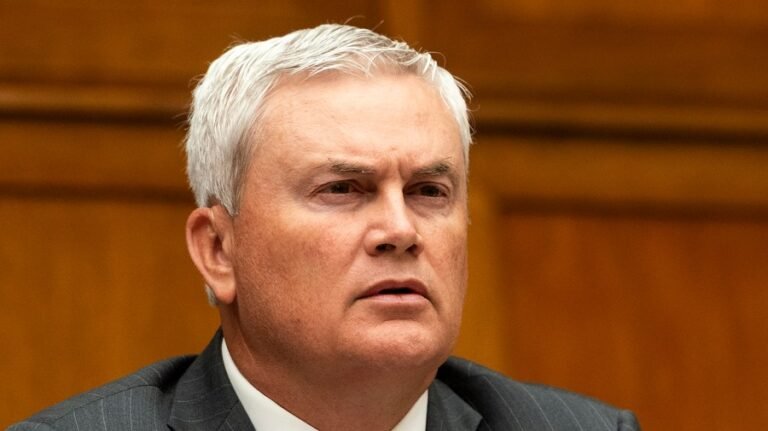
Artificial intelligence is not only disrupting labor markets and reshaping geopolitics, but also becoming one of the most energy-intensive technologies of our time. In fact, it is placing an already overloaded power grid under even more strain.
Recent estimates from the International Energy Agency suggest that by 2026, global data centers are projected to more than double their electricity consumption, potentially exceeding 1,000 terawatt-hours. This will be driven not just by the energy needed operate and cool chips, but also by the vast computational demands of AI model training and deployment.
This surge in demand is occurring just as utilities across the U.S. are warning of capacity shortfalls. Worse, regulatory bottlenecks and climate targets over the last four years made it harder to bring new energy supply online. In short, we are not on track to meet the energy demands of an AI-driven economy.
What happens when national-scale ambitions conflict with local economic needs? One overlooked episode — centered on the backlash over state-level environmental, social, and governance, known widely as ESG — offers perspective.
ESG investing aimed to encourage corporate responsibility, but it also introduced new constraints on energy financing and infrastructure development. When major financial institutions began limiting support for oil, gas, and other politically disfavored sectors, some U.S. states responded with legislation barring public contracts with those firms.
Texas led the charge in 2021, passing laws that effectively pushed several of the country’s largest municipal bond underwriters, such as JPMorgan and Citigroup, out of the state’s market. Critics warned this would raise borrowing costs for local governments. But in a new working paper, we examined the actual financial impact using comprehensive data on bond yields between 2017 and 2024. We found that even in large and complex deals, where underwriting relationships matter most, the exit of ESG-sensitive firms did not significantly affect pricing.
Texas’s policy led to no systematic increase in borrowing costs. We also found that the same was true in Oklahoma after it adopted a similar policy in 2023.
What explains this null result, which runs counter to what some ESG proponents predicted and expected? Partly, it reflects long-term shifts in the structure of the municipal finance market. Underwriting spreads have declined over the last two decades. Competition has also intensified, and many states — especially those with zero income tax — retain robust investor demand.
But the deeper insight is this: When states push back against perceived overreach by firms or ratings agencies, markets often adjust. Other underwriters step in, investors recalibrate and life goes on.
This lesson matters because AI’s energy appetite is forcing a similar reckoning. National climate goals have prioritized decarbonization, often by sidelining traditional energy sources before viable alternatives are ready. Meanwhile, capital has flowed toward green technologies unable to cost-effectively scale — arguably at the expense of system reliability.
To train a single advanced AI model can consume several gigawatt-hours of electricity — roughly equivalent to powering hundreds of U.S. homes for a year. And inference costs (referring to the energy needed to run these models at scale) could dwarf training in the long run. Meeting this challenge will require not only new capacity, but also investments in energy efficiency and grid interoperability, so that power flows can dynamically match shifting demand across regions and time zones.
The National Energy Dominance Council, established by President Trump in February, is a pragmatic step to bridge the gap between national ambition and on-the-ground implementation. By coordinating states and private stakeholders, the council is working to accelerate permitting timelines, identify high-impact transmission corridors, and streamline regulatory processes that often slow energy infrastructure.
Its convening power has also facilitated more transparent negotiations between utilities and major corporate energy buyers, encouraging market-driven investments in renewables while reinforcing grid reliability. Rather than impose top-down mandates, the council is helping align incentives and remove bottlenecks that have historically stalled progress.
In this environment, states cannot afford to be passive. They must act to secure their energy futures both to meet AI-driven demand and to maintain economic competitiveness. Some are already doing so. Arkansas, for example, has launched efforts to fast-track natural gas permitting. Georgia is investing heavily in nuclear and grid modernization. And Texas, despite the fallout from its 2021 winter storm, remains the largest generator of wind power while also expanding natural gas generation to stabilize supply.
Critics may worry that such moves conflict with broader climate goals. But most would agree that the alternative — a brittle grid, rolling blackouts, and politically opaque AI rationing — is worse. Policymakers at all levels should recognize that reliability and capacity are not optional in a digital economy. Nor is energy neutrality a viable long-term position.
If ESG finance taught us anything, it’s that states can and do push back when national trends threaten their core interests. The market consequences of these interventions are not always dire. Sometimes, they are neutral. Occasionally, they even improve outcomes by correcting for one-size-fits-all approaches that misalign incentives.
With the energy transition entering a new phase, and AI accelerating that shift, now is the time to reexamine the balance of power between state priorities and federal, or corporate, initiatives. We cannot afford to sleepwalk into an AI-powered blackout.
Christos A. Makridis is an associate research professor at Arizona State University, visiting faculty at University of Nicosia, and a visiting fellow at the Heritage Foundation. Christian Lundblad is the Richard Levin Distinguished Professor of Finance and the Senior Associate Dean for Faculty and Research at the University of North Carolina at Chapel Hill.


